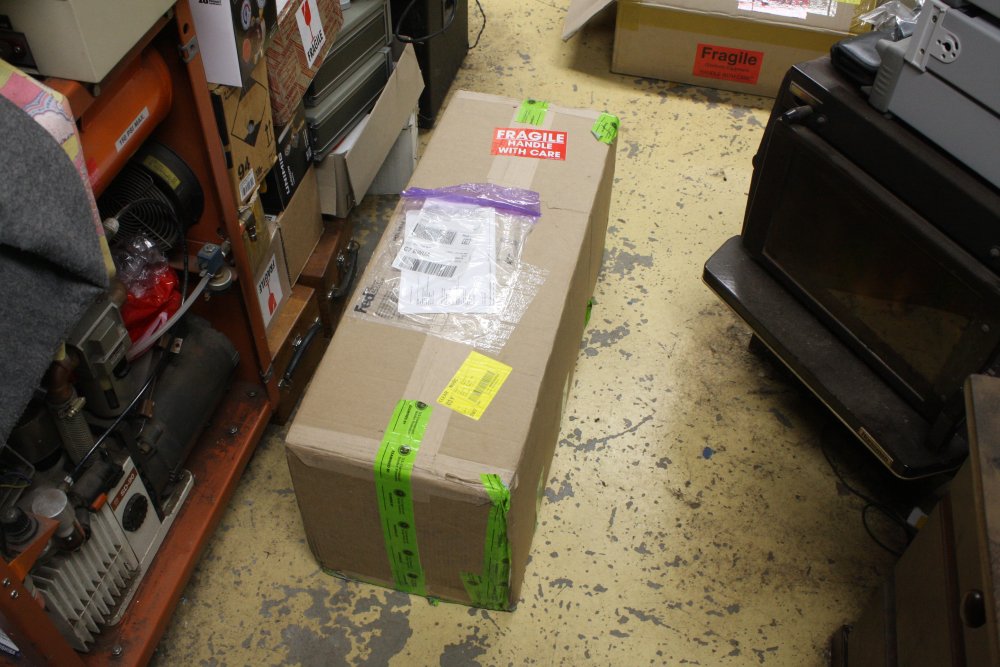
The box as picked up from Enfield. Green tape? That wasn't put there by the sender.
A box arrived from the USA, via Fedex. Since it contains something quite rare, I picked it up at their Enfield depot to avoid risks of that last trucking step. I had been trying to find one of these in good condition and complete with the wooden protective case, for several years. Naturally I'm feeling kind of nervous about the shipping stage.

The box as picked up from Enfield. Green tape? That wasn't put there by the sender.
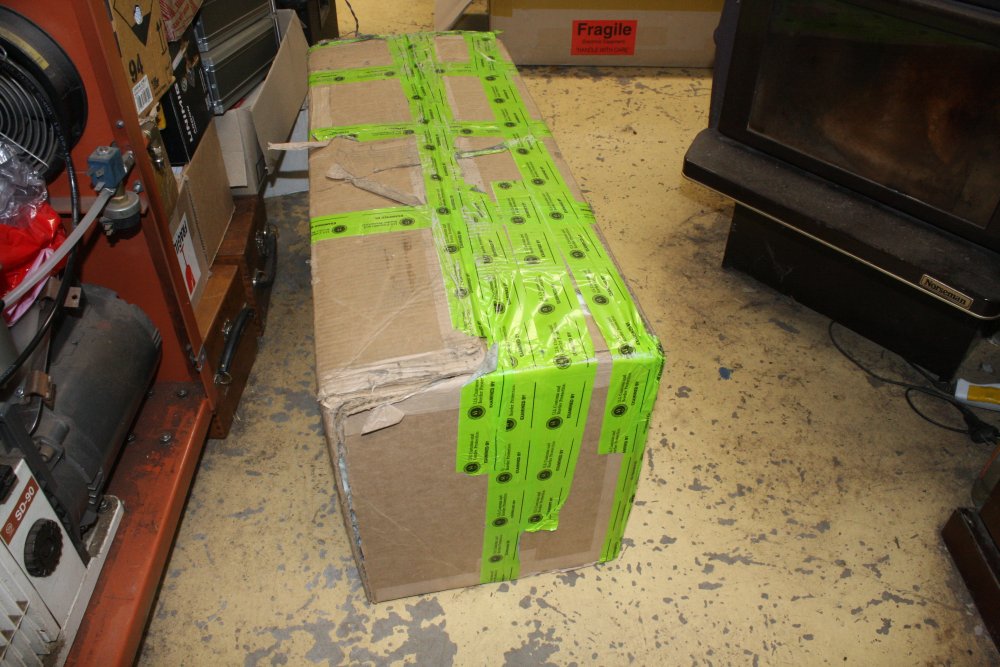
The bottom of the box. Sigh, I know what's happened here.
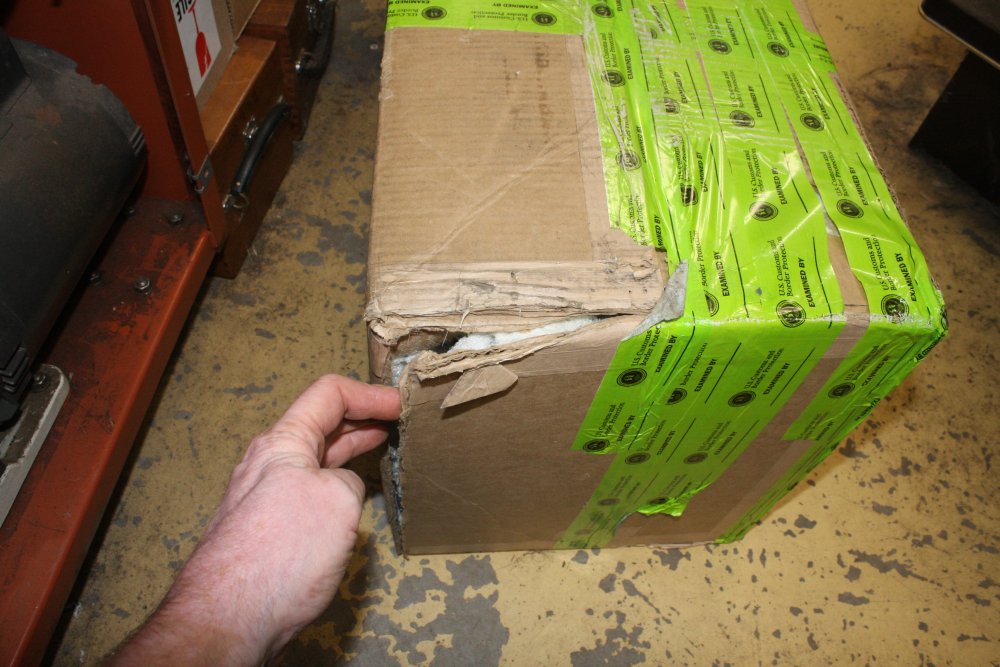
They didn't even bother to tape up all their box damage.
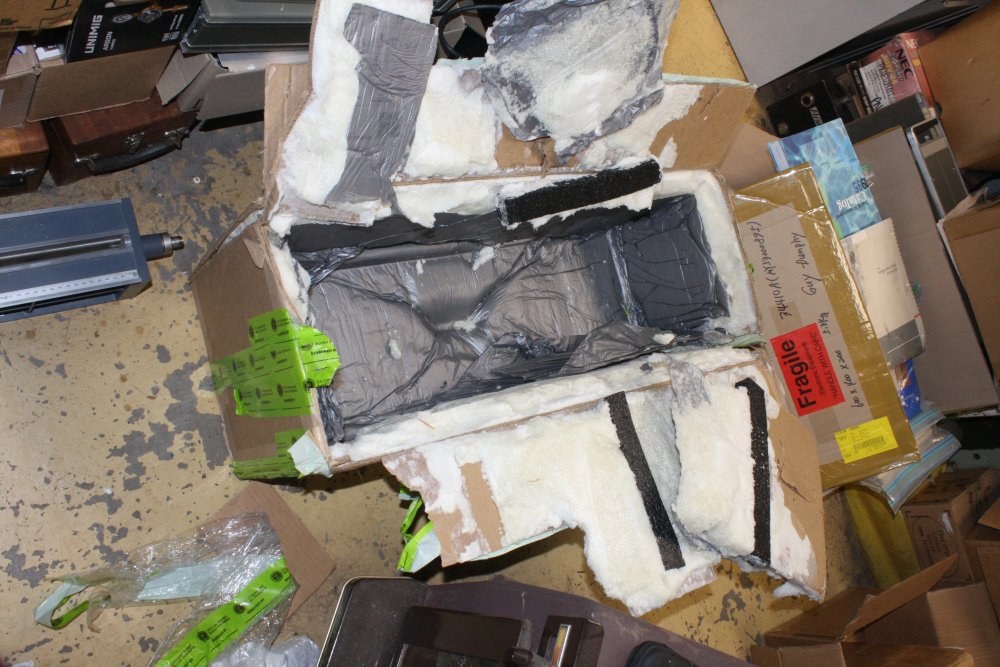
The bottom after I re-opened it solely by cutting the green tape. The torn cardboard and foam is all as 'they' opened it from the bottom. Instead of from the top, where the foam lid allows easy non-destructive access. What a mess! Who would be this stupid?
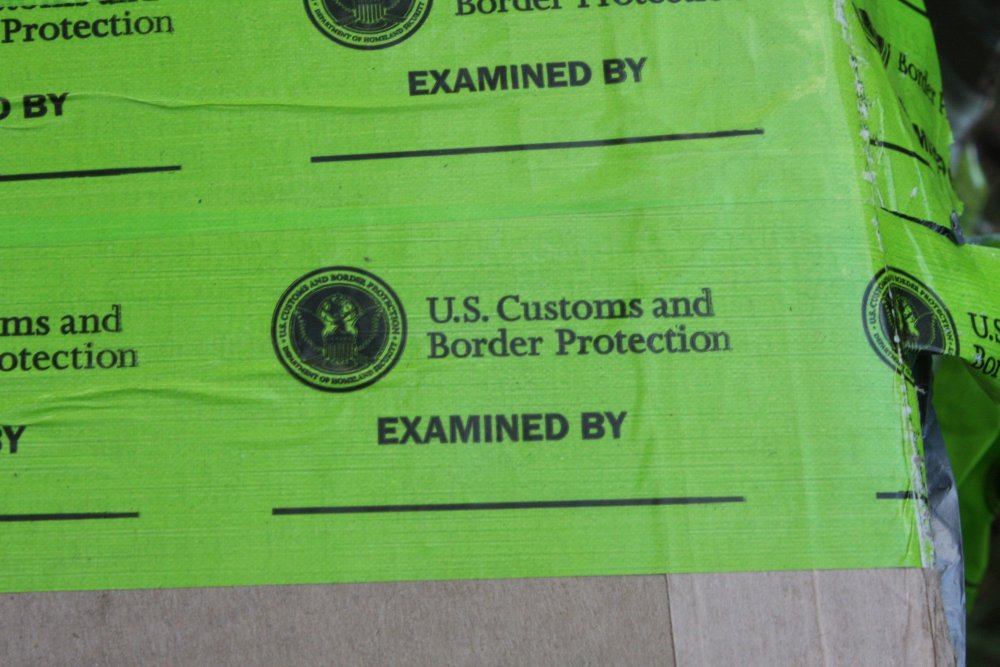
That's who. These retards. Protecting the world from rare vintage electronics since whenever.
It's my experience that when US 'border protection' open boxes leaving the country, they always open from the bottom. No matter how obviously the box should be opened from the top.
Perhaps they think that protects them against booby-trapped boxes? Listen guys, here's a hint. Since you always open from the bottom, if someone wanted to play 'practical jokes' with you, they would put the trigger mechanism in the box bottom.
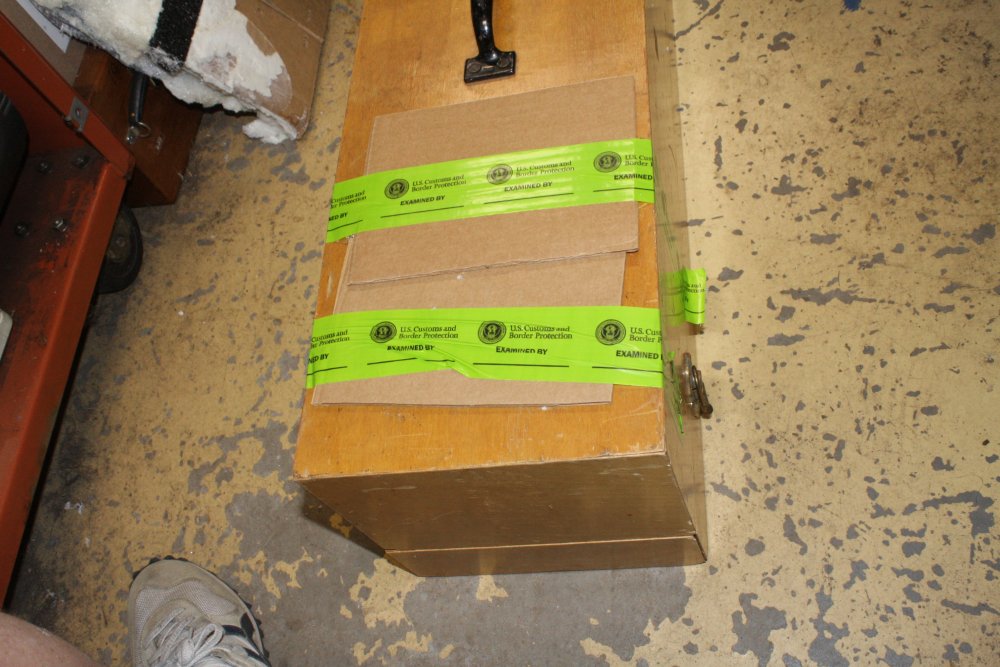
Ha ha ha! They must have been feeling at least slightly guilty and foolish by this point, since they made a slight effort to not damage the box lacquer with their sticky tape. On the top. But never mind the sides. This is their way of saying "we looked inside this too."
Tilting the box, I could hear rattling inside. That's not good! The instrument is supposed to be firmly clamped in place.
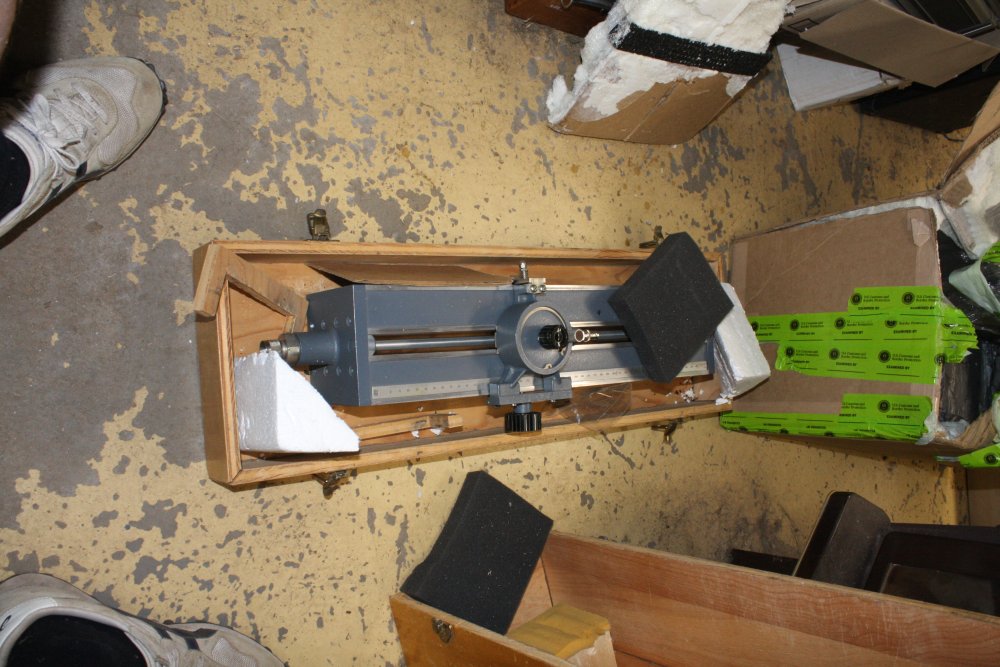
On opening the wooden box, it turns out the whole thing has been end-dropped hard enough to break loose the wooden mountings. At both ends! Those were glued and nailed in place, so that took considerable force, in at least two box-drops.
Fedex are generally pretty good at not dropping boxes, so I'll put the rough handling down to US border protection clowns.
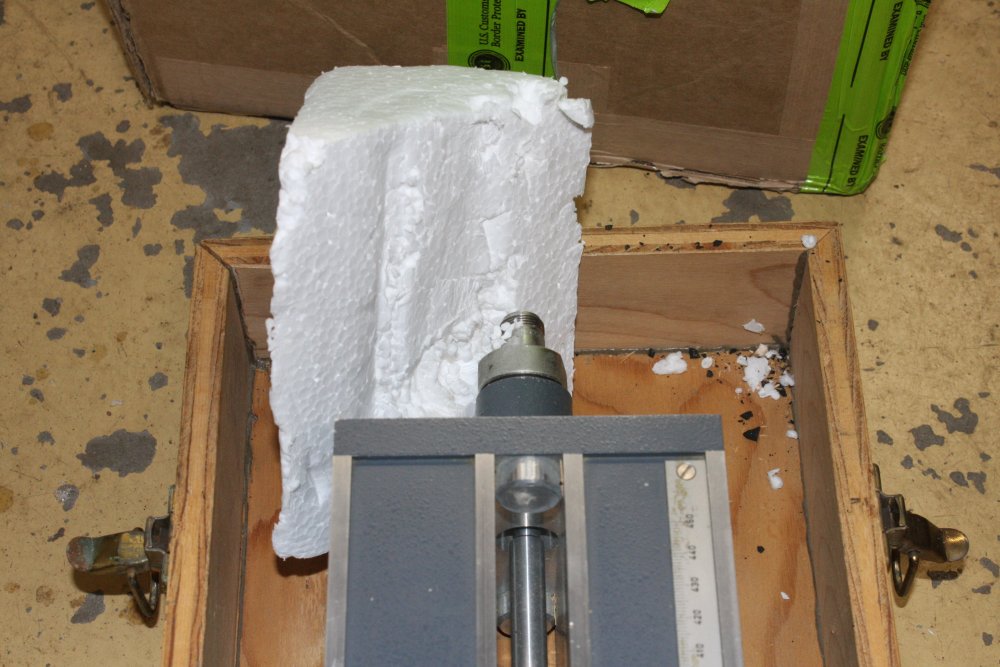
Fortunately these styrofoam blocks stayed in place enough to prevent the Slotted Line's end N-connectors from digging into the box ends. But notice the gap in the box edge joint. Its glue was broken apart by the impacts. Fortunately the joint was glued and nailed, so it didn't fail totally.

The carriage was free to slide back and forth, and did. Violently enough to bend this side pin when it contacted the inside of the box.
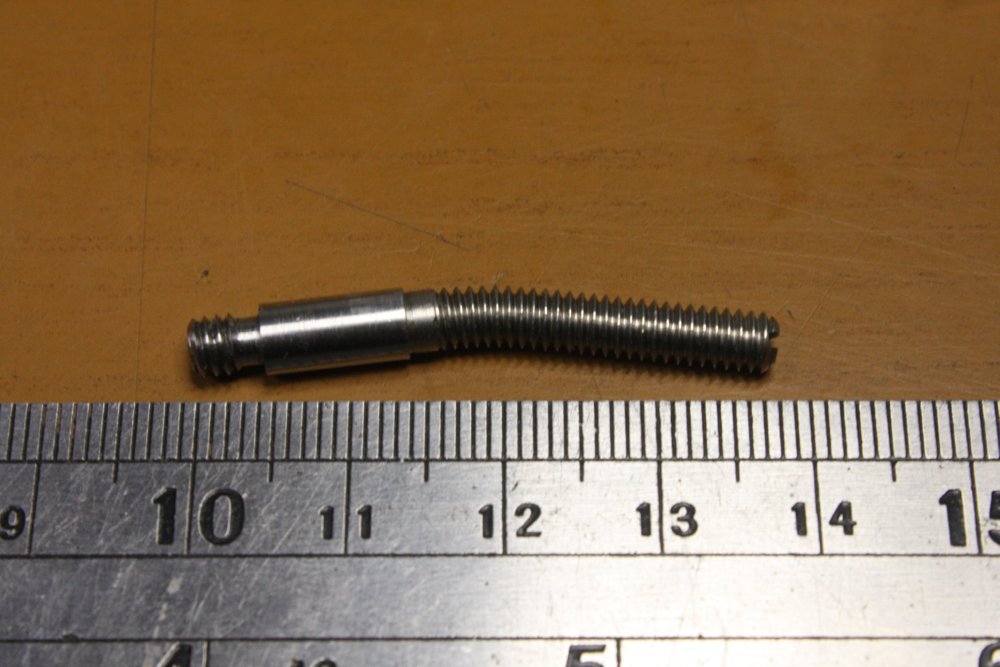
Very fortunately, little enough bend that the stainless steel could be straightened well enough. It would have been a serious pain to machine a replacement for this.
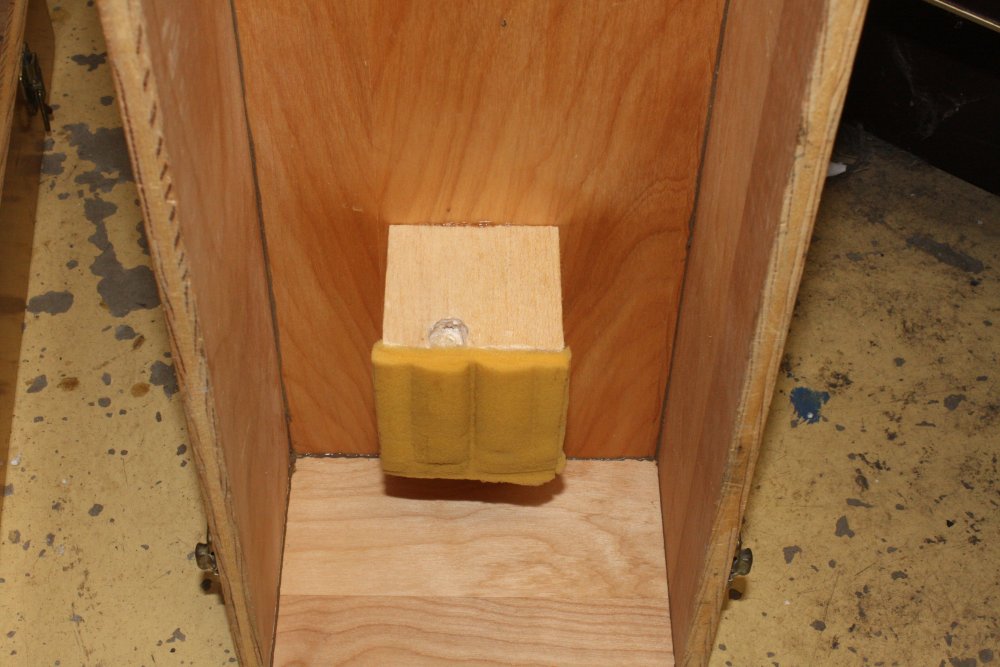
This hole is where the BNC connector on the carriage rammed into the wooden block repeatedly. Fortunately the wood is fairly soft and the connector seems undamaged.

Unlike the wooden box. Every edge seam on the base, and the side seams on the lid, were cracked apart to varying degrees. Luckily the nails kept the box together enough that the Slotted Line was still protected.

Exploring the amount of an edge separation with a steel ruler.
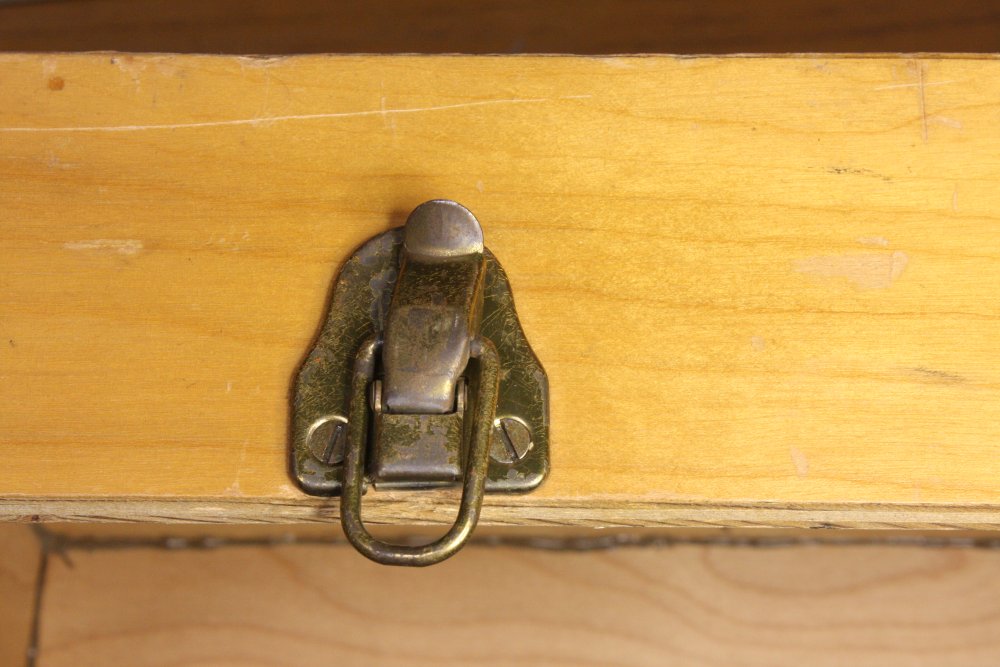
Because the box top and bottom parts had been forced in opposite directions, all the latches were bent like this. Again very fortunately they could be bent back adequately.
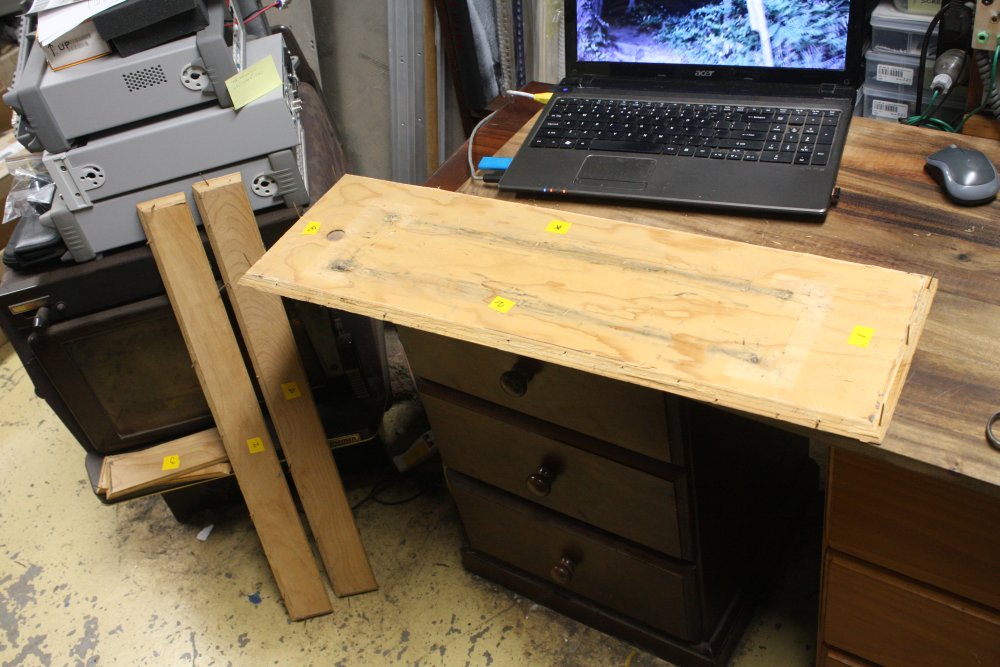
I decided that the box bottom had to be completely disassembled and rebuilt. The box top could be just glued and clamped without complete disassembly.
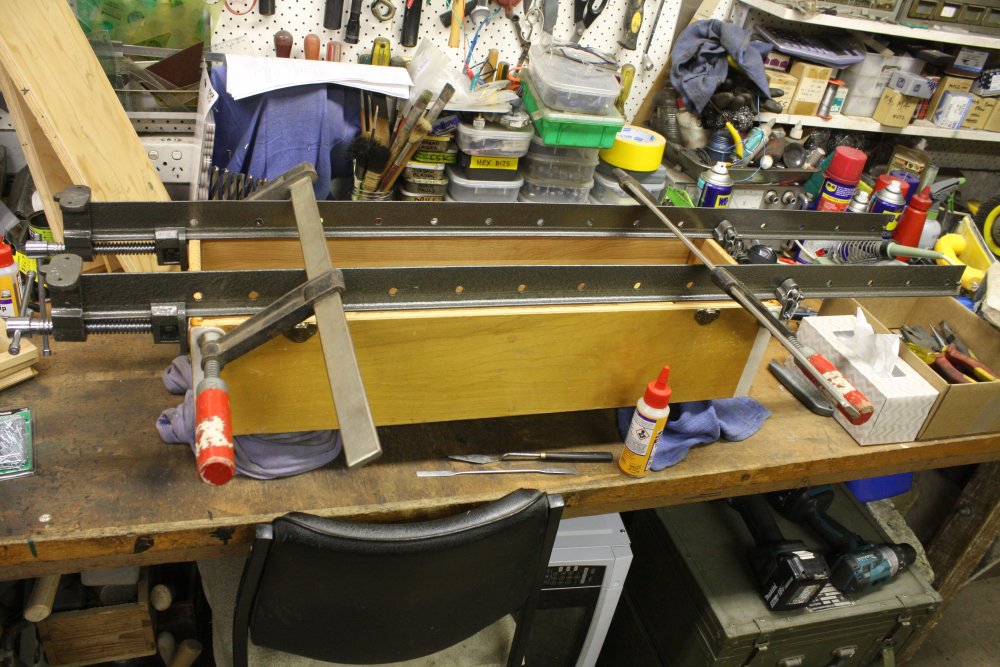
Clamping the box top as the glue sets. I had used a very thin palette knife to work urethane glue into the cracked joints. Last year I'd bought just one of those long gray clamps to see if they were any good. They are cheap crap but do work. For this I needed two so had to go to Bunnings to buy a 2nd one.
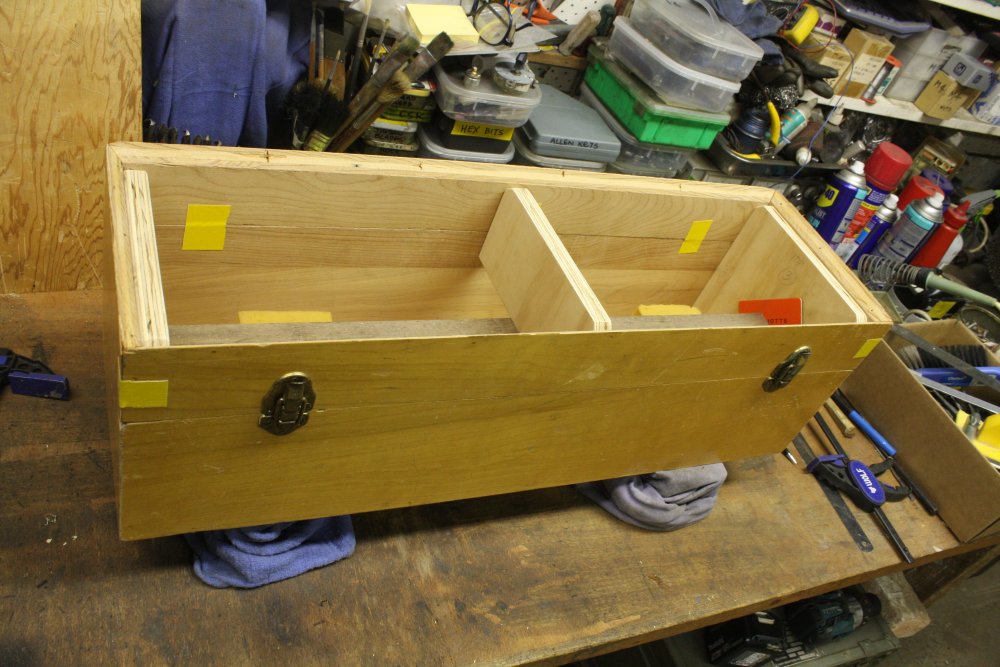
Setting up temporary interior bracing so the box base sides stay aligned with the box top sides during clamping.
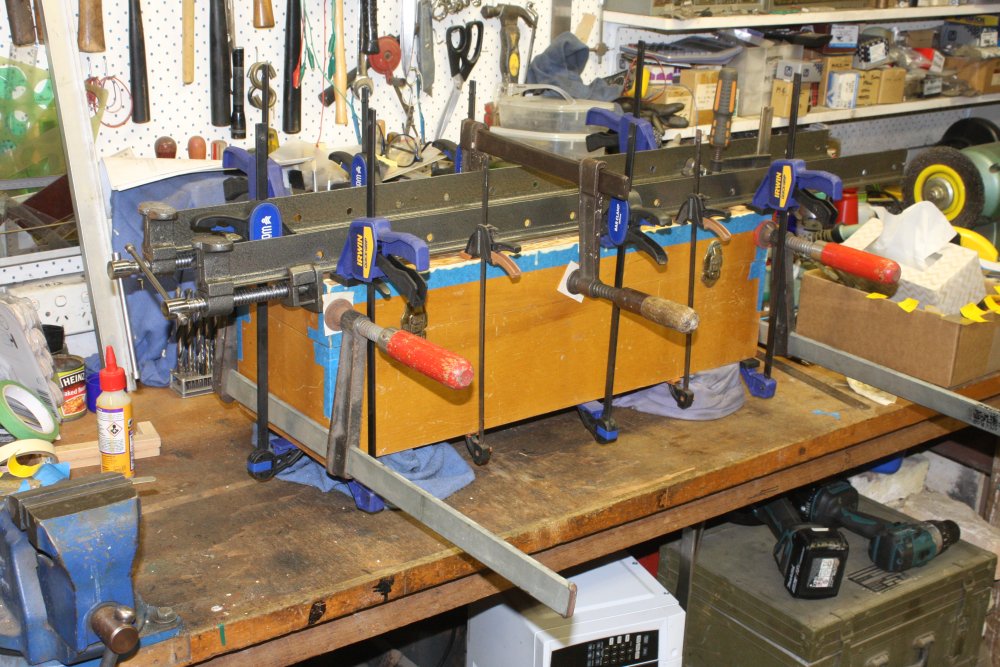
After quite a lot of masking and brown packing tape applied inside and out, to prevent the glue sticking where it shouldn't, here it all is. Glued and clamped. Fingers crossed I didn't miss taping any points that could glue the base and lid together. Don't forget all that internal bracing.
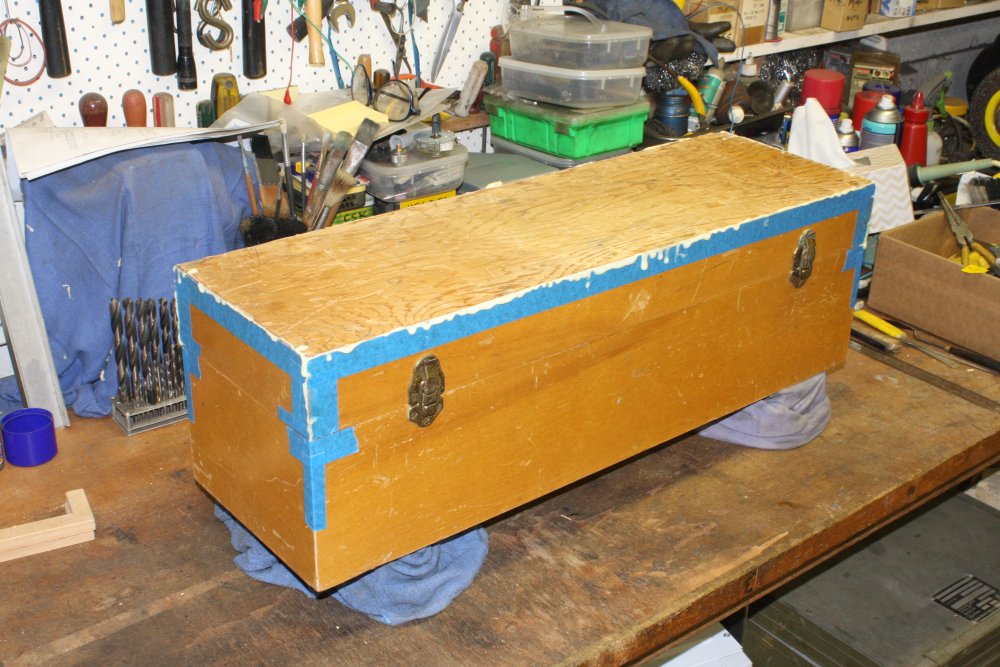
Clamps removed. Next step, find out if the box parts can be separated. (Yes, they did come apart.)
Then there was some tedious tape removal and seam tidying.
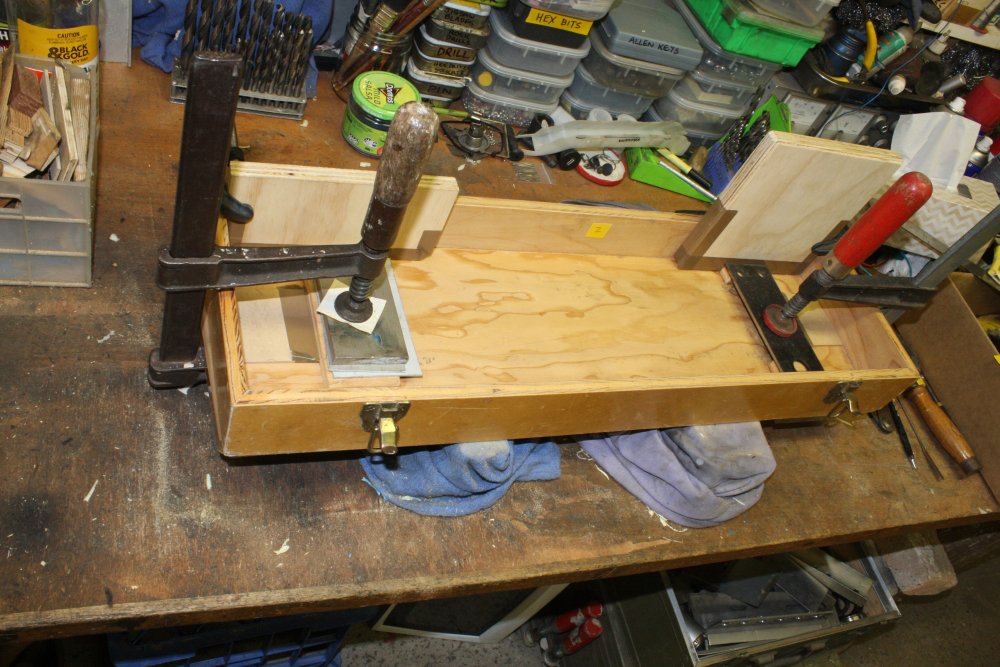
Setting the two "U" shaped positioning stops back in place. All the other bits of brown-taped wood are just temporary spacers. After the glue set I nailed these too, with more nails than before.
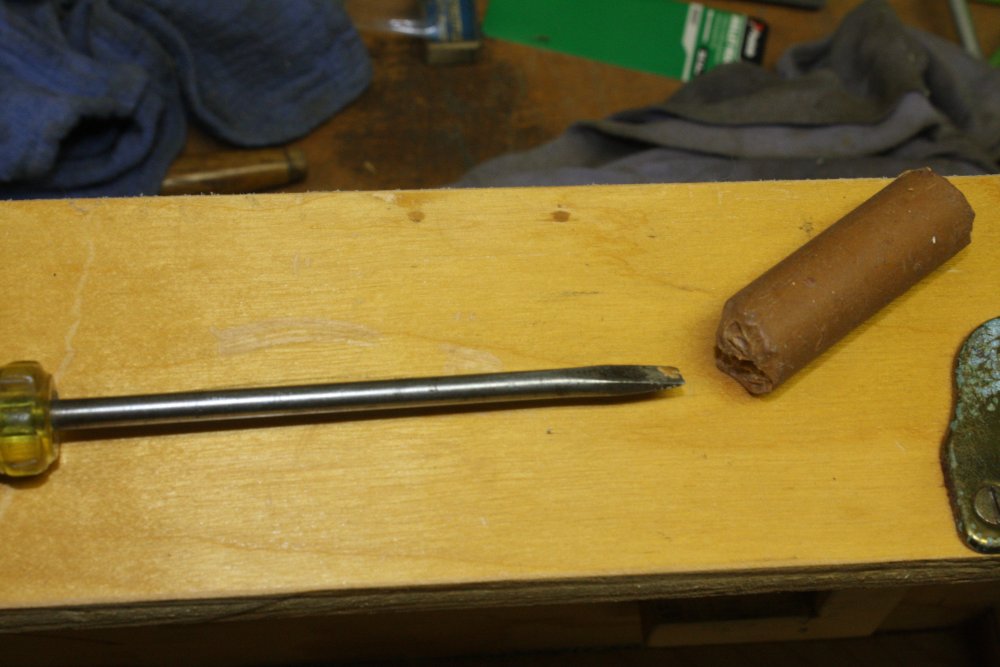
After re-nailing along the joints, here using colored wax to fill the nail-head holes. The wax is not quite matching the laquered wood surface color, but then neither was the original filler. The dot at left of center is an original, the one at right is mine just now.
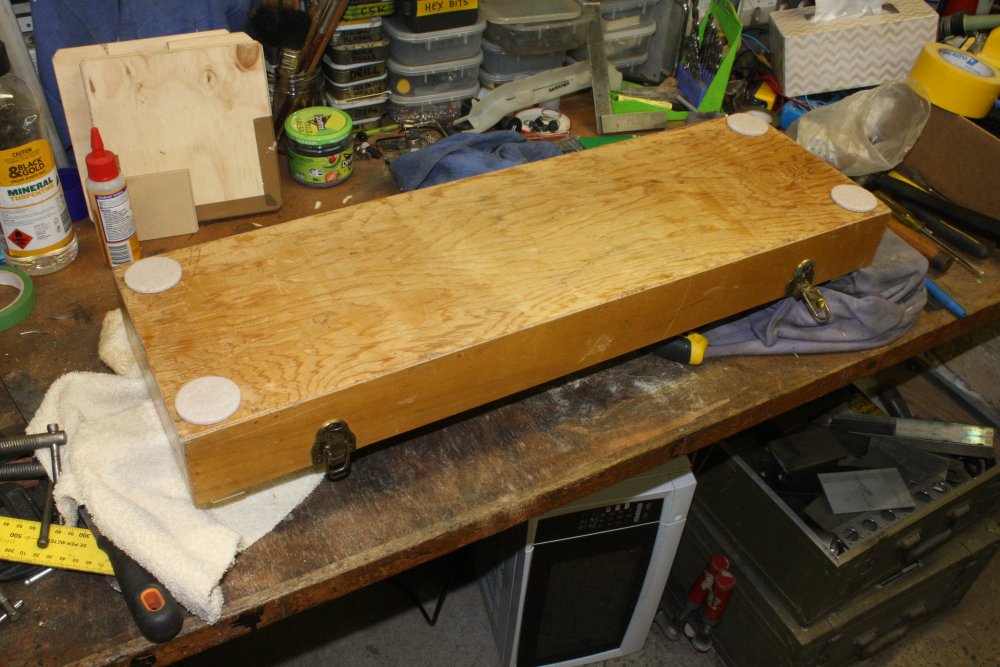
Stick-on felt pad feet. Originally the box had rubber feet secured by screws; long gone. This works better.

With the Slotted Line sitting in place. I'd also added the four wooden corner posts. Both to reinforce the box base corners, and to keep the box top aligned with the base. Previously there was no alignment other than the latches, which allowed some sideways looseness.
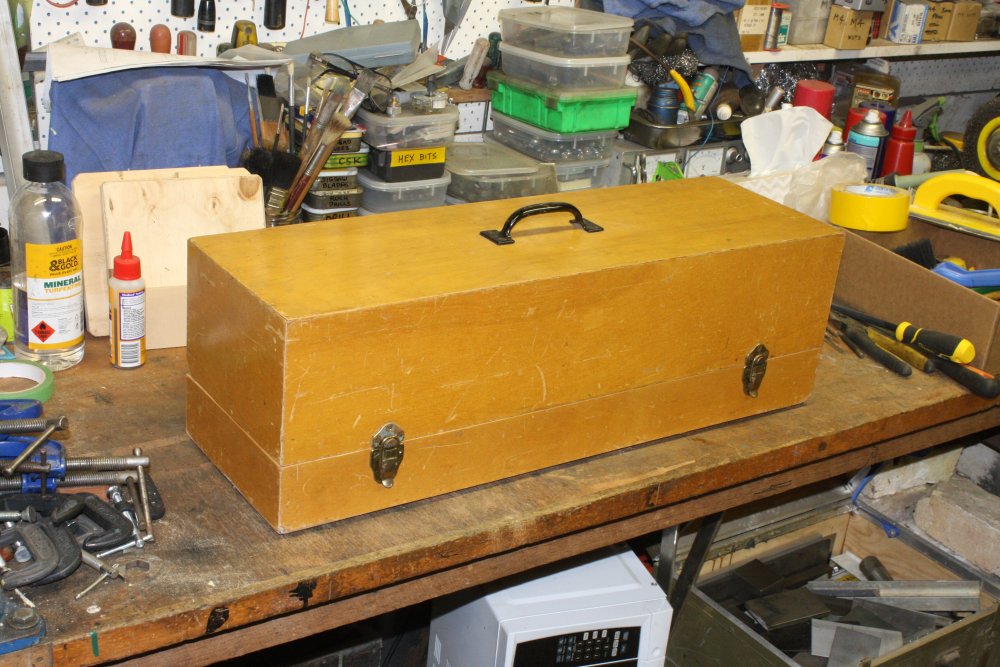
Done.
This unit is serial number 119-01705 and would have been made around 1971. About 54 years old.
It has done pretty well to last this long intact.